Hole in the Clouds
Nov 19, 2009
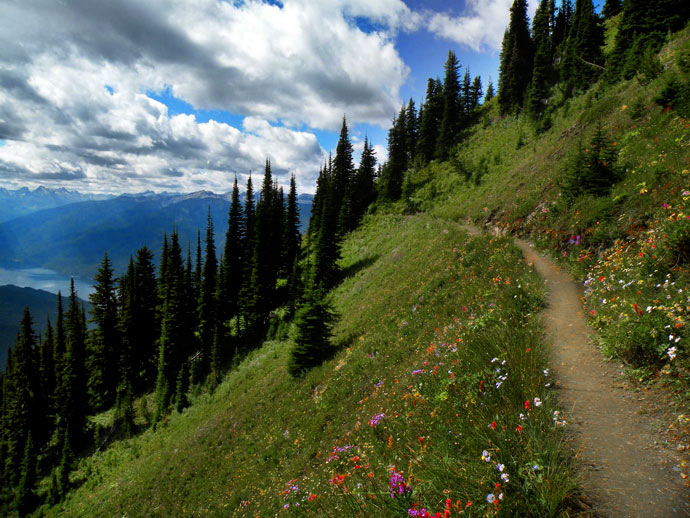
About twelve summers ago, we made it to Idaho Peak, above New Denver, British Columbia, in the Selkirk Mountains. That meadowful of flowers up there is as good as it gets for flowers.
The trail isn't as sketchy as it might look; it meanders gently around the bend up ahead toward a fire tower that overlooks Slocan Lake and the tiny lakeside towns of Silverton and New Denver. All the settlements in this neck of the woods were late-nineteenth-century mining towns; when the silver and gold gave out in the early to middle years of the twentieth century, the towns struggled, and some vanished. A revival began in the 1960s with U.S. draft dodgers and Canadian and U.S. back-to-the-landers, who were attracted by the scenery and the lack of twentieth-century sprawl.
Best thing about the flowers on Idaho Peak: it's always summer up there. The flowers are always in full bloom. I can't remember it any other way.
landscape
Canada
mountains
summer
Idaho Peak
New Denver
British Columbia
Slocan Lake
flowers
(Image credit: Z Vickery)
Feb 22, 2010

Winter is still with us, or at least with many of us, and there will soon be at least one more quick glance at icy cold stuff through that hole in the clouds. But let's hear it for daffodils in February.
This photo was taken yesterday in Tuscaloosa. The thing about spring in Alabama is that it starts right about now and goes on and on and on, growing flowerier and flowerier, month after month, till finally, some time in May, the air disappears and it's just too hot.
The daffodils are nothing but a tease, along with the quince blossoms and the Japanese magnolias. Then the wisteria and the redbuds. Until finally, around the beginning of April, it's seriously spring, with dogwood above and azalea all over. (The big Southern magnolias don't bloom till June, when it's hot, so I count them as summer flowers.)
They had hard freezes this winter in Alabama and even a little snow. But by yesterday, according to our Tuscaloosa correspondent, it was 70 and sunny.
Alabama
flowers
spring
(Image credit: Anna Singer)
Mar 3, 2010

Back when this bloom was at its peak of perfection--a few days before Hank took its picture--he spotted it in a greenhouse and decided it was the finest flower ever. He doesn't know what kind of flower it is, and neither do I.
Do you? Please help us out here.
flowers
(Image credit: Hank Stein)
May 25, 2010
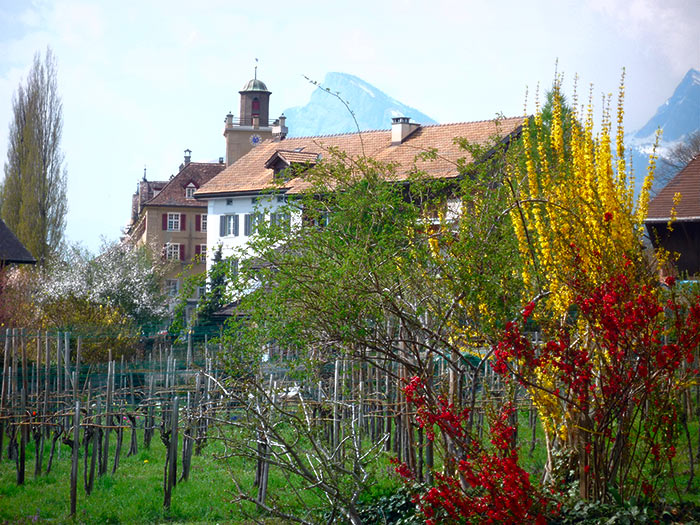
landscape
flowers
Switzerland
(Image credit: Katrin Maldre)
May 30, 2010
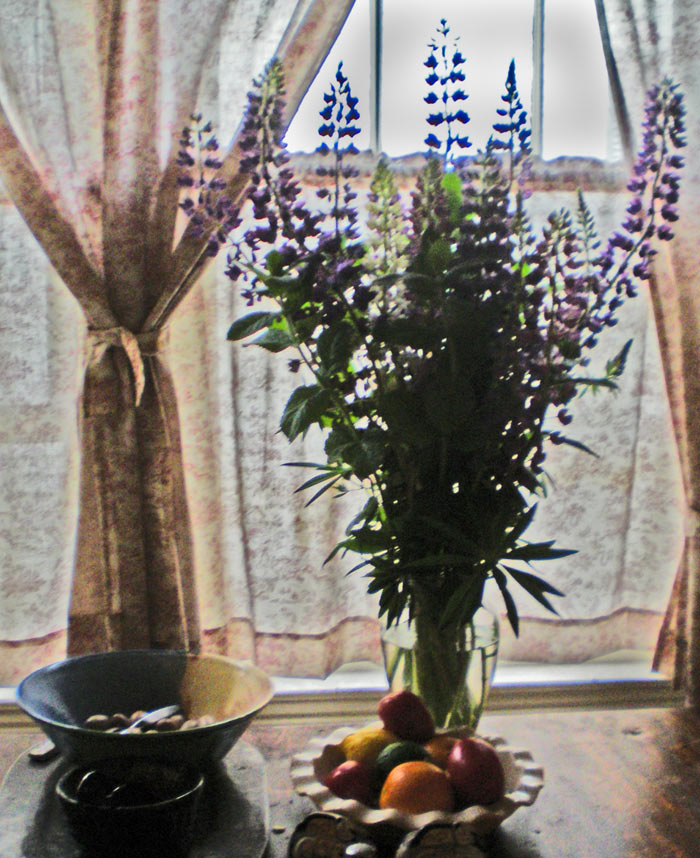 For the kitchen table, Marion brought us lupine from her yard in Warren, Maine. Sharing the vase with the flowers are leaves of mint.
For the kitchen table, Marion brought us lupine from her yard in Warren, Maine. Sharing the vase with the flowers are leaves of mint.
Maine
flowers
Marion Puglisi
lupine
Warren
Mar 23, 2011
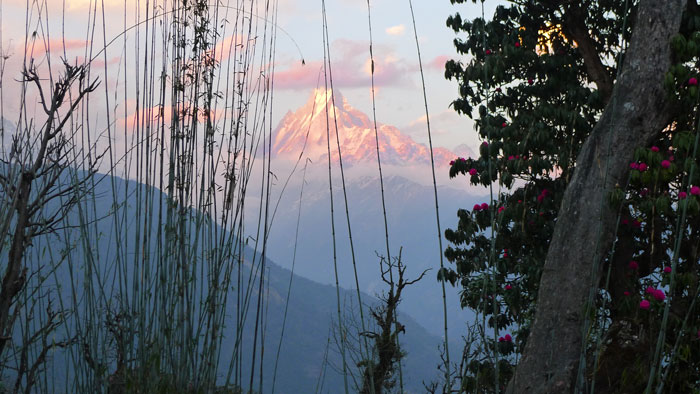 I had hoped that our days on the trail in the Himalayan foothills would include views like this, and such expectations were fulfilled many times over. This is Machhapuchhre–Fishtail–a holy mountain that no one is allowed to climb. The flowering tree is a rhododendron, Nepal's national flower, which was just coming into bloom in early March.
I had hoped that our days on the trail in the Himalayan foothills would include views like this, and such expectations were fulfilled many times over. This is Machhapuchhre–Fishtail–a holy mountain that no one is allowed to climb. The flowering tree is a rhododendron, Nepal's national flower, which was just coming into bloom in early March.
But the scenic vistas were really the least of the experience. Nepali footpaths are essentially highways for the villagers who live in the hills; they have no railroads, no cars or trucks, certainly no airports, so if they want to order a little refrigerator from town and bring it home, somebody will have to walk up the trail with the refrigerator on his back.
If they want to bring a squawking chicken to a nearby village, somebody will have to tuck it under her arm and walk with it. If they want to bring in sacks of rice, or buckets of sheetrock, they will have to load up a donkey caravan and walk behind it with a loud voice and a big stick. They may have to walk for days and days and days, first on the floor of the valley, trudging upstream alongside a river, and then steeply up the side of the hill, on a rocky staircase of sorts built up over the centuries with rocks pried loose from the soil of terraced hillside fields and vegetable gardens.
One of these staircases had more than 4,000 steps–think four or five Empire State Buildings on top of one another. More of which to come.
The villages are agricultural in character, but they all have commerce now, thanks to the trekking trade. Restaurants feed the visitors, souvenir stands sell them stuff, and lodges put them up for the night–accommodations are "basic," with outdoor facilities, but tourists don't have to carry their own tents or food. To feed us trekkers, somebody from the village walked down the hill with an empty basket on his or her back and then walked back up again with a basket full of bottled water and other Western goodies. Nepalis don't use backpacks; they carry even the heaviest loads with the aid of straps across their foreheads.
At least one inn in every village is called Shangri-La. Rooms go for about 200 rupees–$3–a night.
landscape
mountains
flowers
Nepal
trekking
Ghorepani
Apr 13, 2011
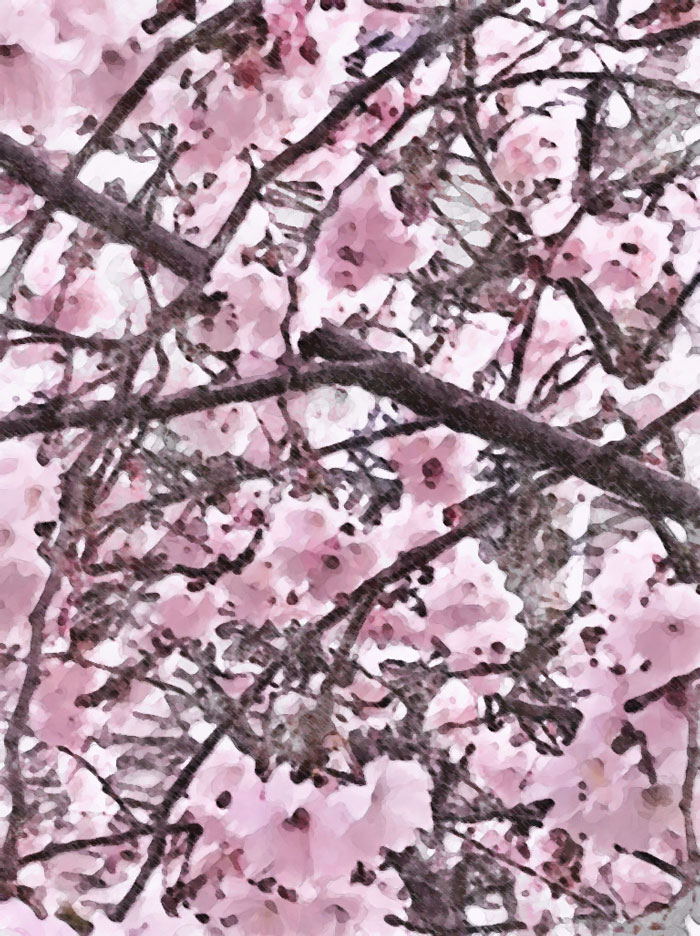 This time of year, in this part of the world, the greening up is happening fast, and the procession of blooms is even faster.
This time of year, in this part of the world, the greening up is happening fast, and the procession of blooms is even faster.
First came the quince, and then before the quince petals could hit the ground, the forsythia was everywhere, schooling us in the meaning of yellow. Meanwhile, up in the sky, the first trees to let loose were Japanese magnolias, with blooms as soft and big as a baby's head and so ridiculously showy that the other trees don't even try to match them. Down on the ground, crocuses went over to daffodils, and in pots and boxes there were suddenly big happy pansies and delicate little violas.
But those were the warm-up acts. Here in the mid-Atlantic states, the star of springtime is the Japanese cherry tree, with branches that arc so heavy with blooms that it's an excuse to declare a festival. Two weeks ago in Washington and last week here in Philadelphia, official festivals drew tens of thousands of cherry-blossom admirers into the parks.
But that was then. Already, the cherry blossoms on my street have mostly drifted on down to the pavement. In the spotlight now are plum trees and redbuds and an old-fashioned kind of ornamental pear tree; its clouds of flowers look just like apple blossoms but smell like . . . like . . . old fish?
And soon enough, or almost soon enough, we'll move on to dogwoods and azaleas and tulips and then my personal favorites, the lilacs. Then it gets hot, and that's it for spring.
My brother-in-law Sandy Fuchs took this picture during a recent walk through the Kenwood neighborhood of Bethesda; I remember riding a school bus through Kenwood on my way to junior high school, tunneling through the flowers.
flowers
spring
Bethesda, MD
(Image credit: Sandy Fuchs)
Jul 3, 2011
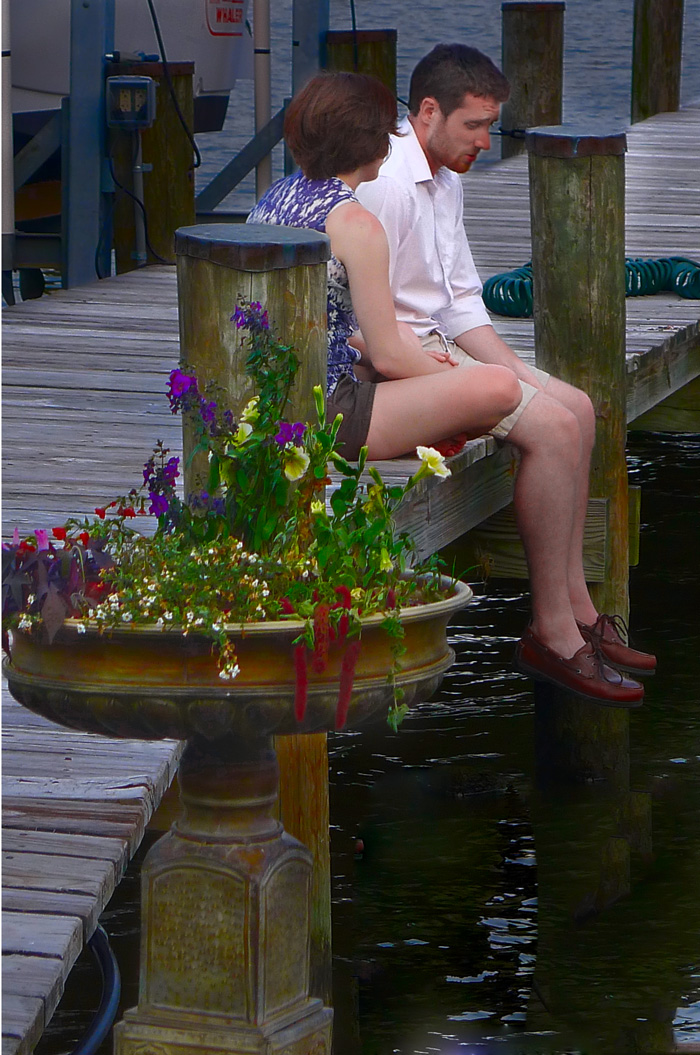 One evening about a month ago, after a long day in the sun, Maggie and Colin weren't posing for a picture on a dock in the Eastport neighborhood of Annapolis.
One evening about a month ago, after a long day in the sun, Maggie and Colin weren't posing for a picture on a dock in the Eastport neighborhood of Annapolis.
Annapolis
Maryland
flowers
Maggie Stein
Colin Doody
waterside
Chesapeake
Back Creek
Severn
Sep 8, 2011
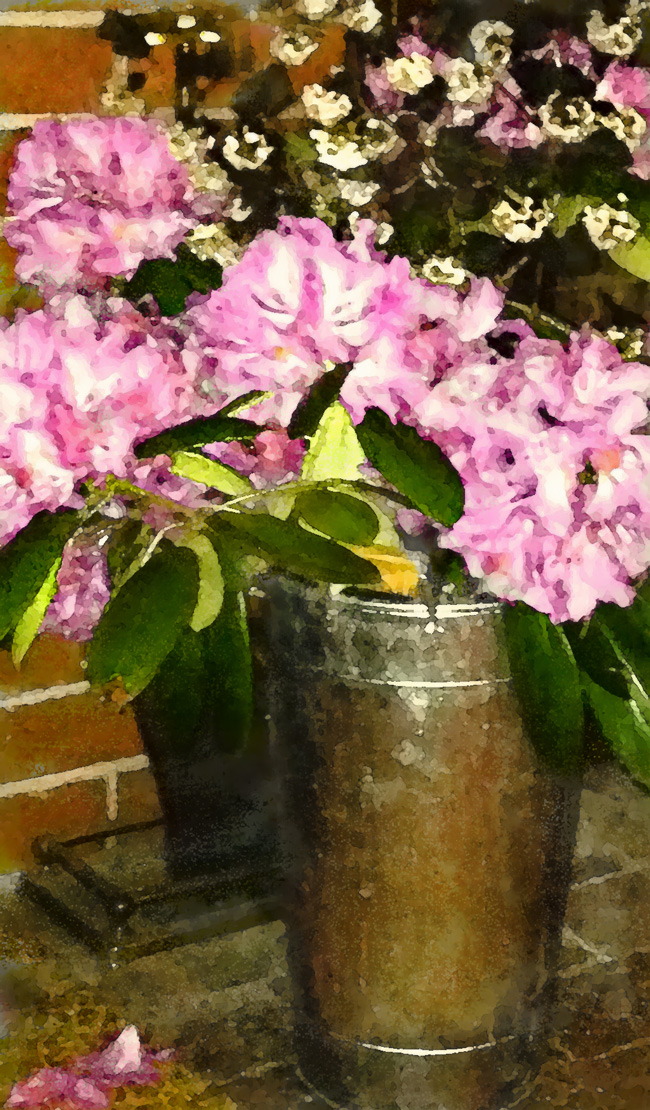
The rhododendron that were blooming back in June, when we spent a week at a camp on Little Sebago Lake in Windham, Maine, are just a memory now. Marion P. grew the flowers and cut them for us and arranged them and even supplied the bucket.
Maine
flowers
Windham
Marion P.
Little Sebago Lake
Jan 13, 2012
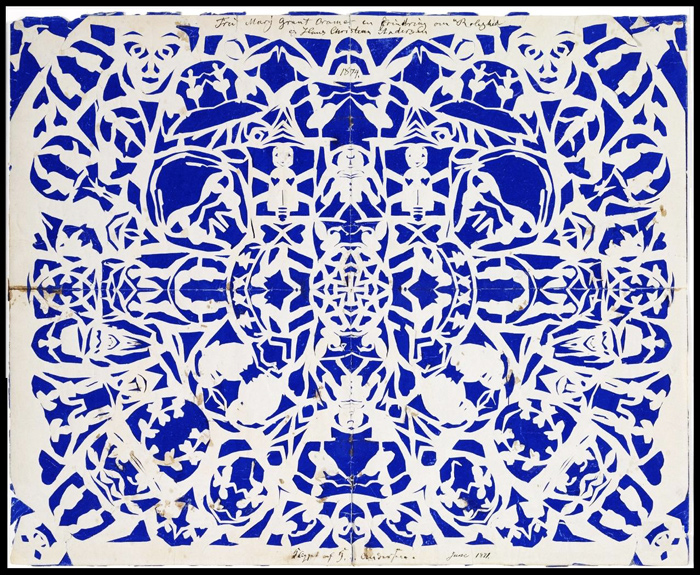 This papercutting associated with Hans Christian Andersen sold recently at a Christie's auction for about $24,000. It bears two dates: 1874 near the top, June 1871 at the bottom. Among the motifs, according to the auction notes: "ballet dancers, windmill men, heart-shaped windows, pierrots, Old Lukoie or sandmen, flower garlands, palm trees, storks, and gnomes."
This papercutting associated with Hans Christian Andersen sold recently at a Christie's auction for about $24,000. It bears two dates: 1874 near the top, June 1871 at the bottom. Among the motifs, according to the auction notes: "ballet dancers, windmill men, heart-shaped windows, pierrots, Old Lukoie or sandmen, flower garlands, palm trees, storks, and gnomes."
flowers
Hans Christian Andersen
papercut
1871
1874
gnomes
storks
palm trees
sand men
heart-shaped windows
Jan 19, 2012
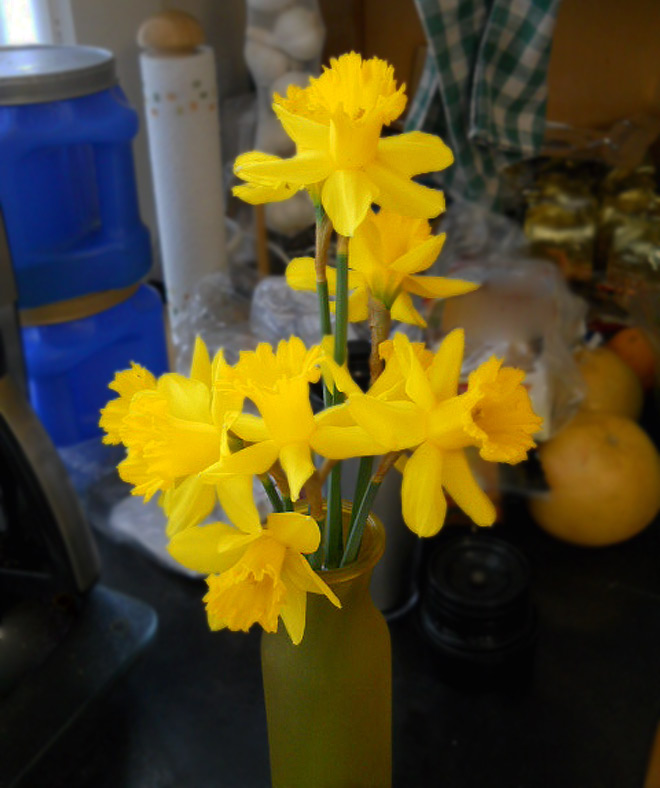
Crazy weather in Alabama this winter, so warm and rainy that the daffodils burst into bloom in mid-January, about six weeks early. And then, of course, a cold front came crashing down; Anna Singer picked these blooms and got them into the house hours before the mercury fell to 23 degrees.
Tuscaloosa
Alabama
flowers
daffodils
(Image credit: Anna Singer)
Jun 28, 2012
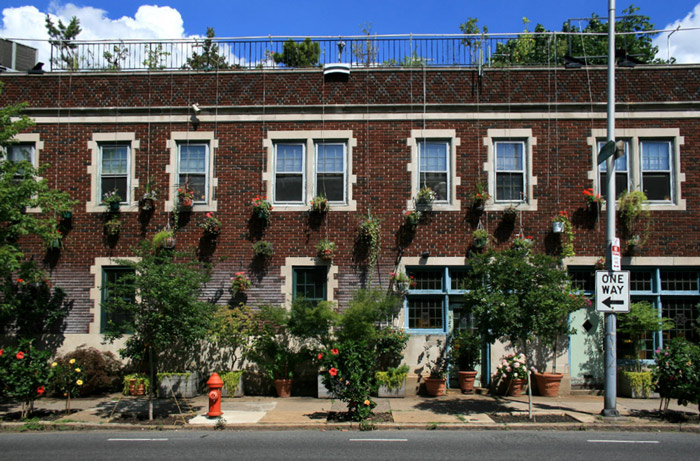 In hot weather, watering all this must be a serious chore. The greenery actually wraps around the corner from 22nd Street, shown here, onto Pine Street. Some of it is edible; all of it is awesome.
In hot weather, watering all this must be a serious chore. The greenery actually wraps around the corner from 22nd Street, shown here, onto Pine Street. Some of it is edible; all of it is awesome.
garden
streetscape
flowers
Philadelphia
neighborhood
building
Fitler Square
22nd Street
(Image credit: Steve Ives)
Sep 22, 2012

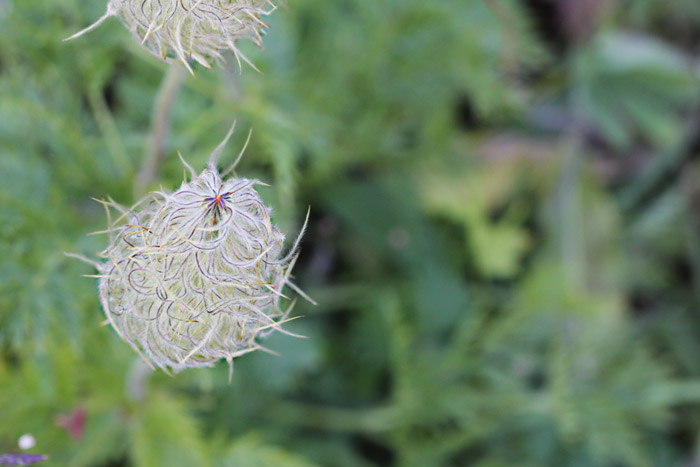 There are good things to say about summertime, but there's also this: it was too damn hot. The air finally feels fresh and pleasant at this new-beginning time of year, even if I've had the same song in my head now for forty-one Septembers. . . .
There are good things to say about summertime, but there's also this: it was too damn hot. The air finally feels fresh and pleasant at this new-beginning time of year, even if I've had the same song in my head now for forty-one Septembers. . . .
Washington
landscape
fall
flowers
macro
Mount Rainier
(Image credit: JJ Stein)
Jun 20, 2013
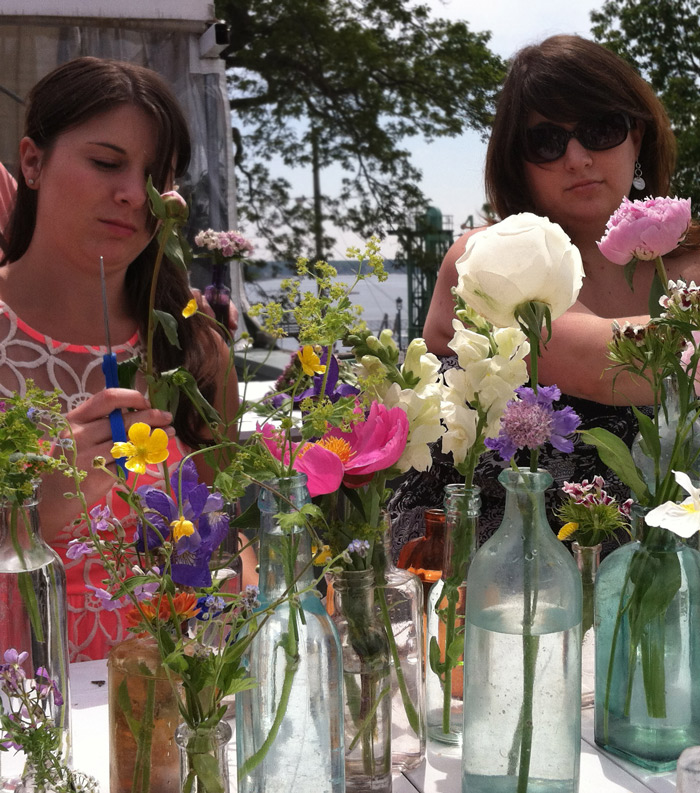 The day before Maggie and Colin's wedding, bridesmaids and friends were hard at work on table decorations. Flowers from gardens and roadsides filled about seventy little antique bottles rounded up from attics and garages and rubbish heaps. For the wedding itself, guests gathered on this balcony to watch the ceremony in the garden below next to the ferry landing on Peaks Island, Maine.
The day before Maggie and Colin's wedding, bridesmaids and friends were hard at work on table decorations. Flowers from gardens and roadsides filled about seventy little antique bottles rounded up from attics and garages and rubbish heaps. For the wedding itself, guests gathered on this balcony to watch the ceremony in the garden below next to the ferry landing on Peaks Island, Maine.
Maine
Peaks Island
wedding
flowers
Maggie
Colin
Jul 29, 2013
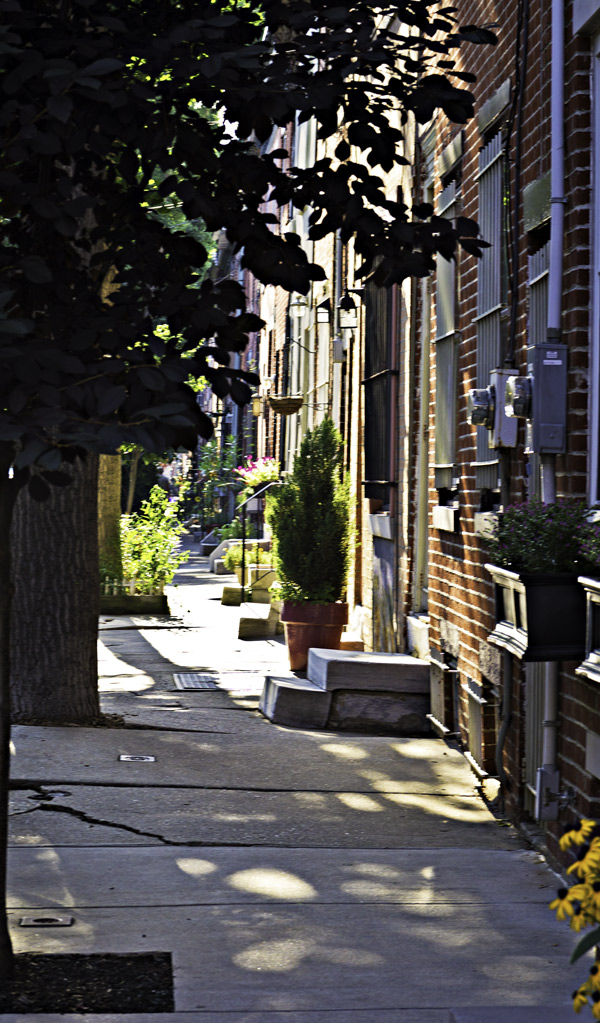
As leafy as the trees may be, when the summer sun takes aim at bricks and concrete, the light will find a way.
summer
streetscape
flowers
Philadelphia
Kater Street
neighborhood
Nov 10, 2013
 We shot this picture at night because well-mannered hibiscus flowers fold up and die at night, after just a single day of wide-open gorgeousness. This bloom's behavior is out of line; it has glowed like this for four or five days and nights now, and it shows no sign of giving up.
We shot this picture at night because well-mannered hibiscus flowers fold up and die at night, after just a single day of wide-open gorgeousness. This bloom's behavior is out of line; it has glowed like this for four or five days and nights now, and it shows no sign of giving up.
We should note that it's cold outside, downright frosty at night. And well-mannered hibiscus plants don't bloom at all in November in Pennsylvania. They give up and die.
There are no more buds on this plant, and many of the leaves have dropped now, or curled up, or turned brown and crunchy. So when this flower goes, that's it; the show's over. But what a show.
In richness and boldness of color as well as in longevity, this last swan song of a flower really outdid the pale, delicate blooms of summer. But oddly, perhaps, if we carefully compare the hibiscus flower of November with a flower from the same plant back in July, it becomes apparent that this new all-night, all-weather blossom is missing its male parts. And that's all there is to say about that.
garden
night
flowers
hibiscus
cold
(Image credit: Little Fuji)
Nov 25, 2013
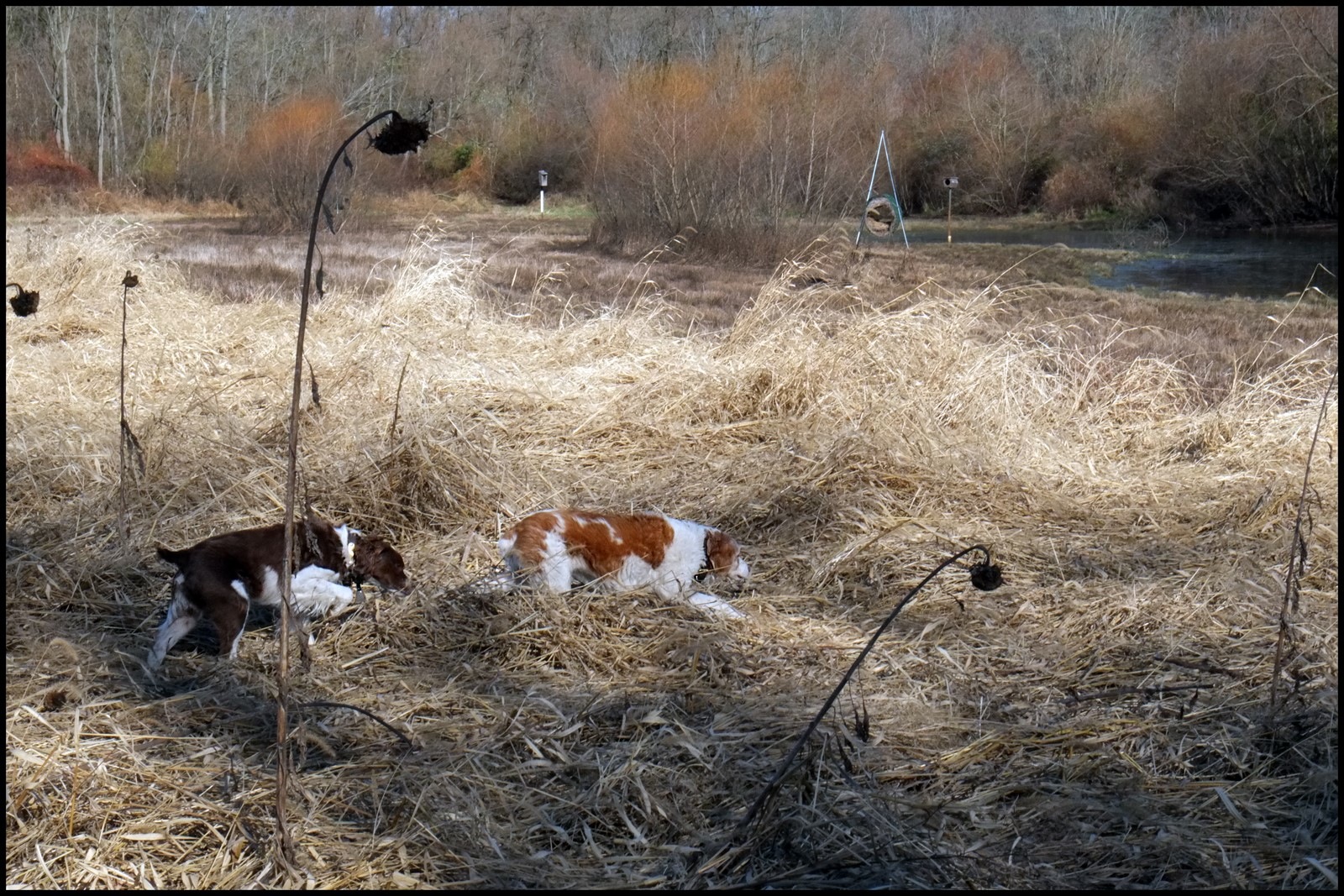 Both of these Brittany Spaniels–bird dogs, for certain sure–believe they're onto something, here in a Pennsylvania marsh where just a few short months ago, sunflowers were smiling.
Both of these Brittany Spaniels–bird dogs, for certain sure–believe they're onto something, here in a Pennsylvania marsh where just a few short months ago, sunflowers were smiling.
landscape
Pennsylvania
fall
hunting
flowers
countryside
dogs
marsh
(Image credit: birddogman)
Feb 24, 2014
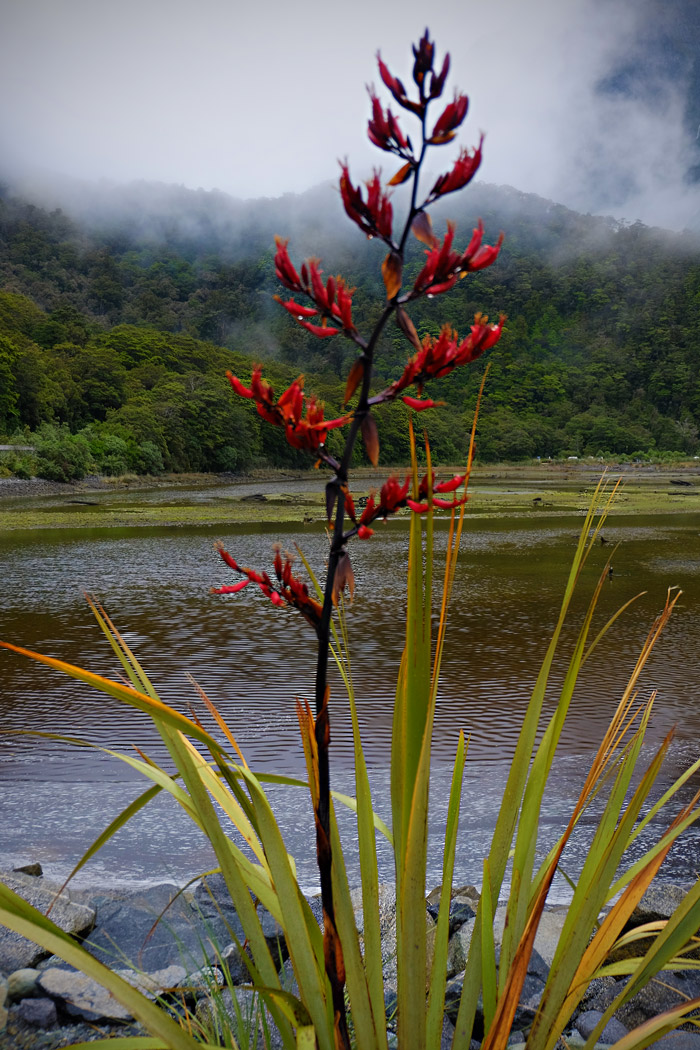 Point your camera at pretty scenes in New Zealand, and it won't take long before you notice how many of your snapshots include a fringe or scrim of tall red-brown lilies.
Point your camera at pretty scenes in New Zealand, and it won't take long before you notice how many of your snapshots include a fringe or scrim of tall red-brown lilies.
They call the lilies flax, which makes no sense. In the northern hemisphere, flax is the name of a field crop, a bushy, weedy looking plant grown for linen fiber and linseed oil. In New Zealand, flax is the name for a group of native lilies that grow wild all over the countryside, around mountain lakes and seaside marshes, in suburban yards and rural hedgerows and the far-flung edges of uninhabited woodlands.
New Zealand flax got its name as a marketing gimmick. The Maori called these lilies harakeke, and they used their fibrous leaves for weaving baskets, fishing nets, ropes, cords, mats, and all sorts of clothing, from rough raincloaks to fine gowns decorated with feathers. By the mid-nineteenth century, the strength and durability of the fiber was known around the world, particularly for ropes, fishnets, and cordage; the Maori began cultivating the lilies in huge plantations, sometimes using slave labor to tend the lilies and strip the leaves for fiber to sell to Europeans. The Europeans, smelling money, promoted New Zealand "flax" as a high-quality version of that Old World lineny stuff.
Meanwhile, Maori continued to weave their flax into goods for their own use, including baskets, as depicted below in a 1903 painting by the Czech artist Gottfried Bohumir Lindauer; the flax baskets in the painting are being woven by women who are wearing garments also woven from New Zealand flax fiber. Lindauer, trained as an artist in Vienna, fled to New Zealand to avoid military service in the Austrian army and discovered he could make a living painting scenes of Maori life.
Below the painting here are additional views of New Zealand flax in bloom.

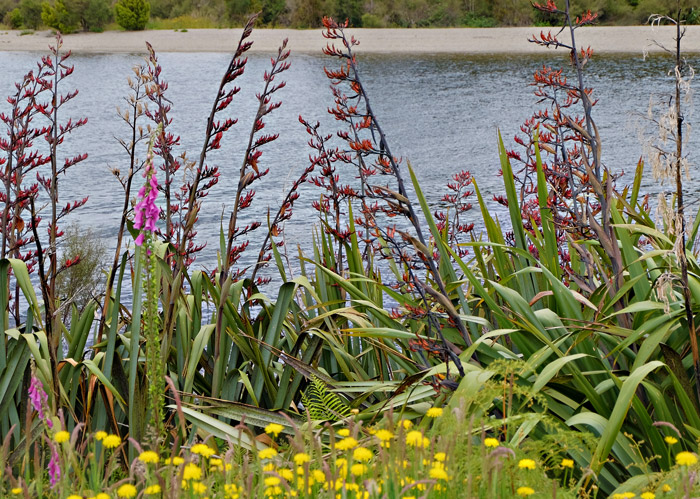
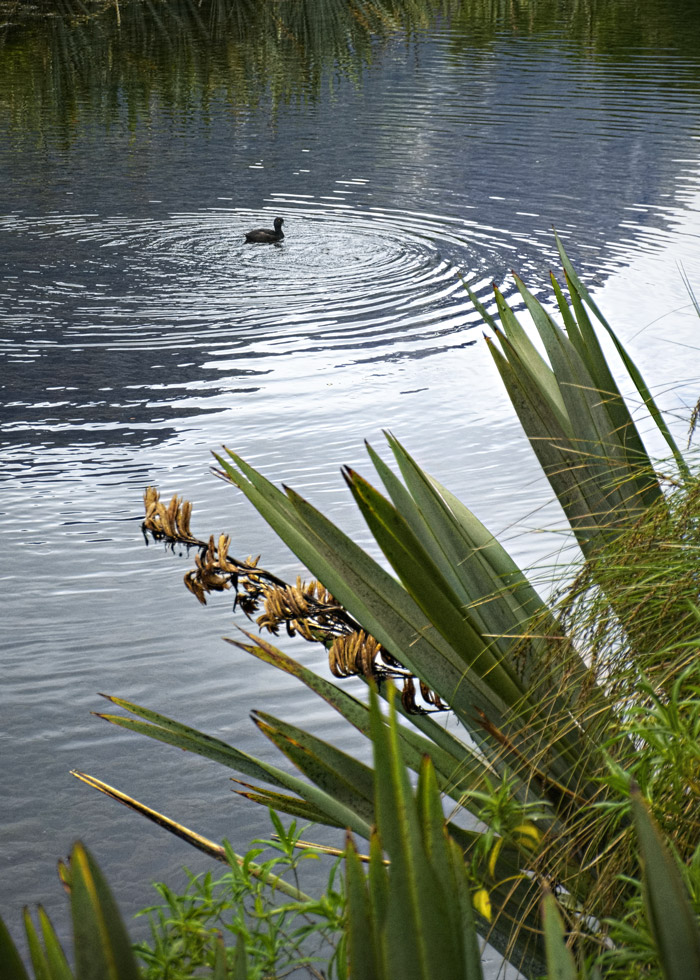

New Zealand
flowers
plants
1903
Gottfried Bohumir Lindauer
flax
lilies
Maori
(Photos by Little Fuji)
(Painting by Gottfried Lindauer)
Mar 5, 2014
 Lupin–from North America–and gorse–from Europe–are valued plants in much of the northern hemisphere. They were intentionally imported into New Zealand, lupin as a showy garden flower, gorse as a golden-blooming hedgerow plant to help farmers establish the boundaries of their pastures.
Lupin–from North America–and gorse–from Europe–are valued plants in much of the northern hemisphere. They were intentionally imported into New Zealand, lupin as a showy garden flower, gorse as a golden-blooming hedgerow plant to help farmers establish the boundaries of their pastures.
Both plants grew well in New Zealand and quickly became naturalized, spreading across much of the countryside, crowding out native bush, reducing habitat for native animals, and eventually finding themselves on the official registry of invasive species and noxious weeds.
Gorse is much the worse offender, now occupying 5 percent of New Zealand's land area and virtually impossible to eradicate. In Europe, gorse thickets are functional living fences around fields and pastures. The hedgerows break up areas of agricultural monoculture, providing habitat for wild birds and other native critters, and the thorny branches help farmers keep "wild" animals out of the fields and grazing animals in place. In New Zealand, however, gorse jumps right out of any hedgerows, displaces both native plants and cultivated crops, and swallows up all the open land thereabouts, till there's no grass left for the sheep and cattle. In just a few years, a gorse infestation can reduce pastureland and cropland to worthless, thorny scrub that is highly prone to catching fire.
Gorse seeds survive for many years in the soil near their parent plants. If the plants are pulled out or killed, the seeds immediately germinate in the disturbed soil and quickly, vigorously, happily replace whatever gorse has been laboriously removed.
Lupin too, is happy in its adopted New Zealand home (even though Kiwis drop the "e" that Americans just know belongs at the end of the plant's name). The lupin species that has made itself at home in so much of the country is Russell lupin, native to western North America and noted for the range of color on its spectacular flower spikes. Russell lupin likes conditions in New Zealand so well it has learned to thrive there even in places without soil, such as in the wide open gravel beds of the South Island's famed braided rivers.
Braided rivers are actually a rare kind of habitat, found in Alaska, western Canada, New Zealand's South Island, and very few other places. They flow steeply down from rapidly eroding mountains, carrying lots of sediment but not much water except during spring snowmelt, when the gravel is scoured clean. During times of low water, shallow streams and pools meander through the gravel, habitat for rare birds and fish. But when lupin colonize a braided river, the dense mats of their roots and stems trap sediment, choking off the riverwater, pinching its flow into relatively deep, narrow, fast-flowing channels that native fish and birds can't survive in.
Lupin spreads across a braided riverbed at the rate of about two meters a year. And the riverwater washes the lupin seeds downstream, to begin new colonies.
The photo at the top of this posting shows both lupin and gorse becoming established at the edge of a braided river near Arthur Pass.
Photo 1 below: Gorse has conquered the hillside at left in the Taieri Gorge west of Dunedin and is spreading to still-pastoral hillsides in the photo's background.
Photo 2: A sheep picks its way between thorny gorse bushes in a pasture with little grass left to eat.
Photo 3: Beautiful lupin grows dreamily in the highlands around Lake Tekapo.
Possible error message: We are decidedly non-expert in the art and science of plant identification. What we claim is gorse in the photos here may actually be one or more of several vaguely gorse-like species, perhaps Scotch broom, which is also an invasive noxious weed, or perhaps a native Kiwi type of broom, which is not considered weedy at all because it keeps to its place in the ecological scheme of things.

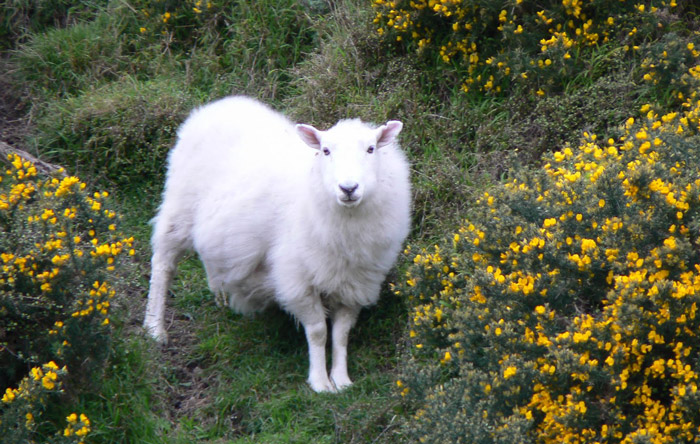
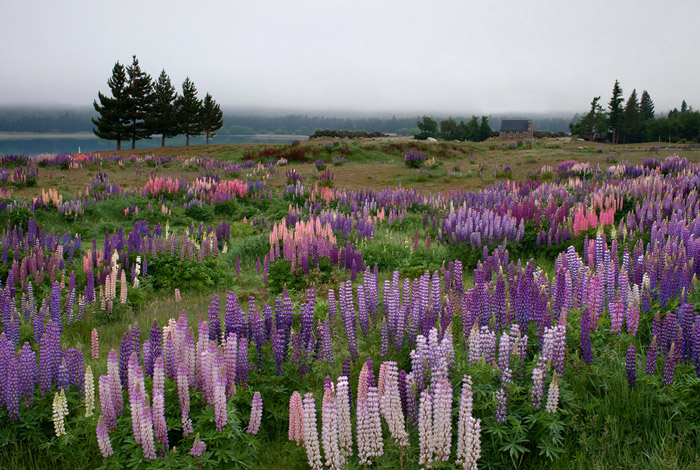
sheep
New Zealand
flowers
plants
invasive species
braided river
Mar 14, 2014
 This year in Philadelphia, spring is coming ridiculously late, but it's coming. One sign that gives us high confidence in spring's imminence involves the tips of the crocus stalks, which are just now beginning to poke their way up out of the cold, wet ground. They'll be blooming soon, maybe within the week.
This year in Philadelphia, spring is coming ridiculously late, but it's coming. One sign that gives us high confidence in spring's imminence involves the tips of the crocus stalks, which are just now beginning to poke their way up out of the cold, wet ground. They'll be blooming soon, maybe within the week.
In the high meadows of Bulgaria's Rila Mountains, tallest peaks in the Balkan Peninsula (2925 m), spring always comes late, and crocuses don't bloom till the middle of June. This picture was taken two springs ago on June 19, 2012.
To catch the bright red glow on the ridge rocks, photographer Evgeni Dinev had to climb up here the day before, hauling up a tent, tripod, and all his camera gear. He snapped the shot at sunrise.
landscape
mountains
flowers
spring
Bulgaria
sunrise
Balkans
crocus
Rila Mountain
(Image credit: Evgeni Dinev)
May 28, 2014
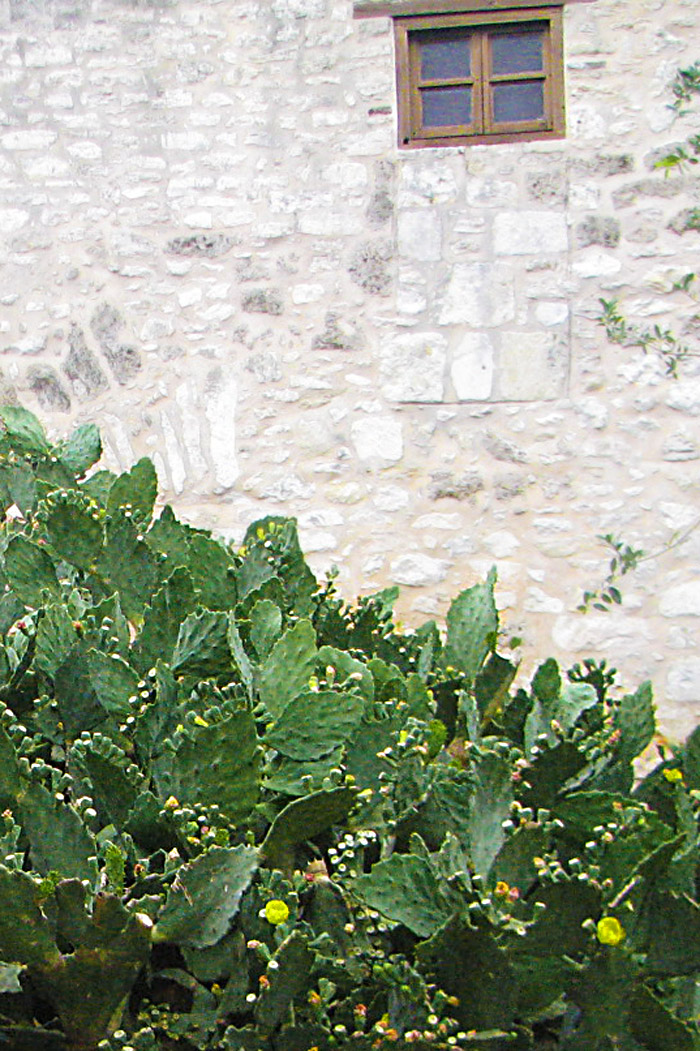 It's springtime, and the cactus flowers are seriously blooming in San Antonio, but don't even think about trying to sneak into the Alamo by climbing through the little window visible here.
It's springtime, and the cactus flowers are seriously blooming in San Antonio, but don't even think about trying to sneak into the Alamo by climbing through the little window visible here.
Texas
garden
streetscape
flowers
San Antonio
Alamo
(Image credit: Carolyn Duffy)
Jun 10, 2014
 There are places in Switzerland that lack the scenic drama of Alpine crags and cliffs. Still and all, Switzerland is Switzerland, what with the daisies and the rolling meadows and the happy, happy cows. The postcard is complete. There's probably chocolate in those villages off in the distance.
There are places in Switzerland that lack the scenic drama of Alpine crags and cliffs. Still and all, Switzerland is Switzerland, what with the daisies and the rolling meadows and the happy, happy cows. The postcard is complete. There's probably chocolate in those villages off in the distance.
landscape
flowers
spring
Switzerland
village
cows
hills
meadows
(Image credit: K. Maldre)
Jul 22, 2014
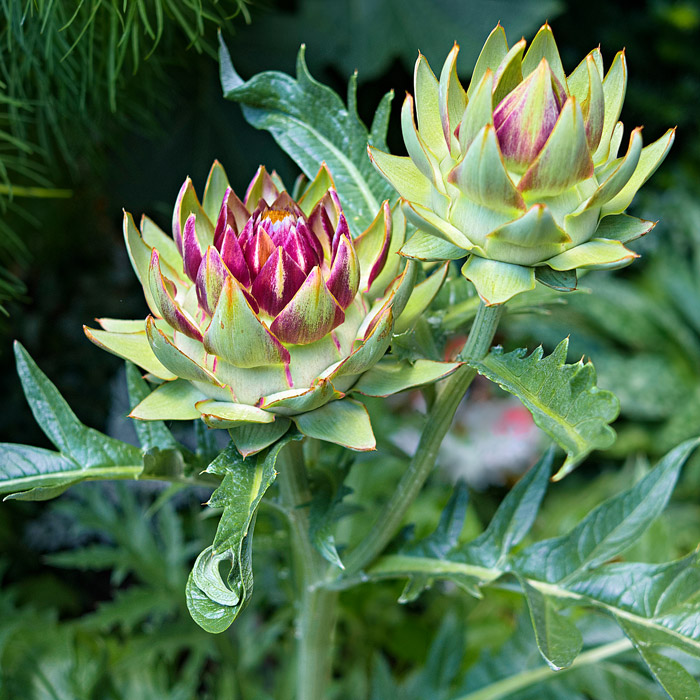 In back of the parking garage at 1700 South Street is a block-long garden on Kater Street, where nobody picked the artichokes in the edible-bud stage. They're flowers now.
In back of the parking garage at 1700 South Street is a block-long garden on Kater Street, where nobody picked the artichokes in the edible-bud stage. They're flowers now.
garden
summer
flowers
Kater Street
artichoke
(Image credit: Fuji T)
Nov 11, 2014
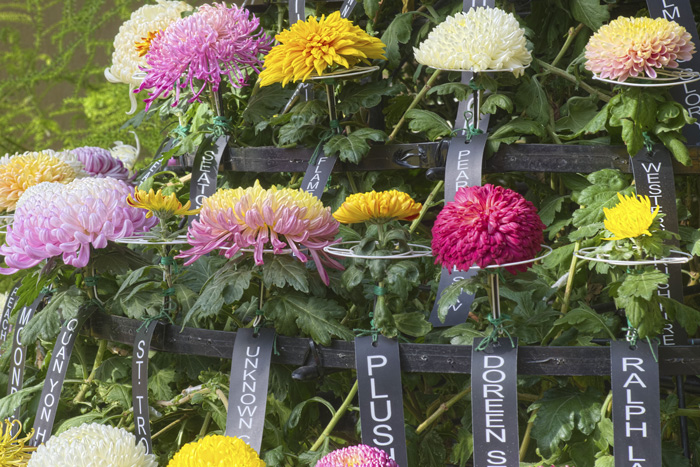 'Tis not the season yet for Philly's New Years Day Mummery on parade, but mums of spectacular colors and colorful spectacle are already among us, at the Longwood Gardens Chrysanthemum Festival.
'Tis not the season yet for Philly's New Years Day Mummery on parade, but mums of spectacular colors and colorful spectacle are already among us, at the Longwood Gardens Chrysanthemum Festival.
Above, the Longwood horticulturists grafted more than a hundred varieties of mums onto a single stem and somehow got them all blooming at the same time.
Below is a single bloom of the 'Nijin Bigo' cultivar, which we are told translates as 'Irregular incurve' Chrysanthemum morifolium.
And below that is the festival scene, in Longwood's main conservatory in Kennett Square, Pennsylvania.
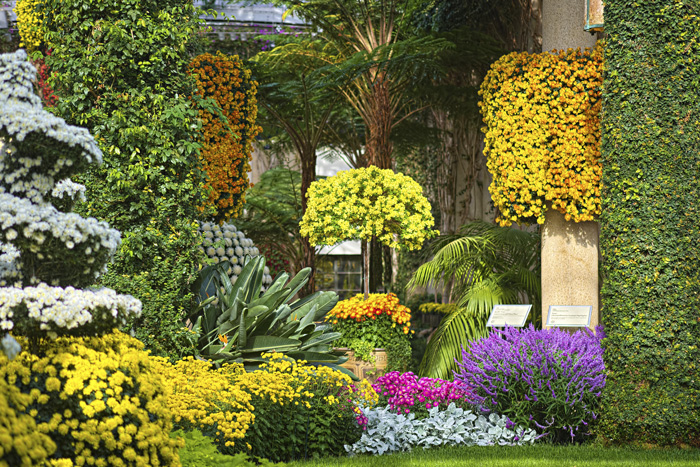
garden
flowers
Longwood Gardens
Kennett Square
chrysanthemums
(Image credit: Fuji T)
Jan 25, 2015
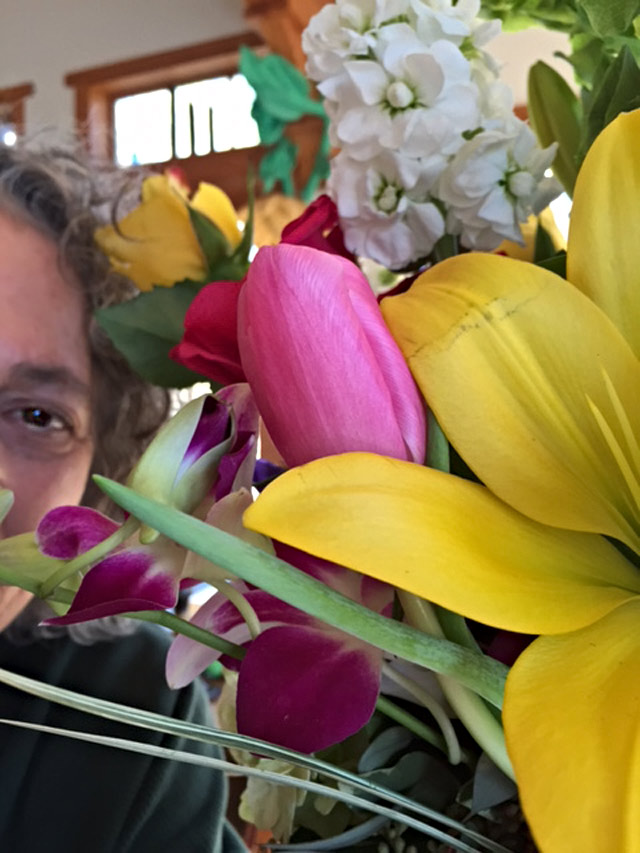
From the Lockridge community near Durham, North Carolina, comes this photo and note from Carol Stack: "My first selfie, with birthday flowers."
This time of year also marks the birthday of our boy John, a.k.a. J.J. Good cheer to both, many happy returns, and let's hear it for one-eyed floral birthday selfies!
North Carolina
Lockridge
flowers
portrait
birthday
selfie
(Image credit: Carol Stack)
Mar 12, 2016
 Mandrake, a plant of biblical, medieval, literary, medical, and comic book significance, blooms in April in New York City, in the garden of the Cloisters at the northern tip of Manhattan.
Mandrake, a plant of biblical, medieval, literary, medical, and comic book significance, blooms in April in New York City, in the garden of the Cloisters at the northern tip of Manhattan.
Mandrake flowers, shown here as buds just beginning to open, are pretty little bell-shaped blossoms, but they are traditionally of little interest. The leaves are heavy and heart-shaped and can grow huge over the course of a summer, but they too are mostly overlooked. With mandrake, a plant native to the Mediterranean region, it's all about the root.
Mandrake root is long and thick and often split into two legs, sometimes arguably resembling the human form. It's also powerfully sleep-inducing when ground and soaked; it was used as an anesthetic in antiquity and into the Middle Ages. In the bible, and perhaps also in the poetry of John Donne, extract of mandrake root cured infertility. In folklore all over Europe, a human-shaped mandrake root in your pocket offered protection even if the church was not on your side; Joan of Arc was charged with "habitually" carrying root of mandrake.
Mandrake was said to spring up in ground drenched with blood or semen from a man being hanged. If you pulled the plant up out of the ground, as Shakespeare warned us, its man-root would scream, and you could die from hearing the scream. There was a report as late as the ninteenth century of a British gardener falling down the stairs and dying after accidentally pulling up a volunteer mandrake.
(In Harry Potter, of course, young witches and wizards wore protection.)
In 1934, "Mandrake the Magician" emerged as the world's first modern costumed superhero, in a newpaper comic strip that ran continuously until 2013. The hero Mandrake's ability to instantly hypnotize bad guys may have been, pardon the expression, rooted in the medicinal tradition of the mandrake plant.

Manhattan
garden
flowers
New York City
plants
Harry Potter
mythology
The Cloisters
mandrake
Ron Weasley
Mar 27, 2016
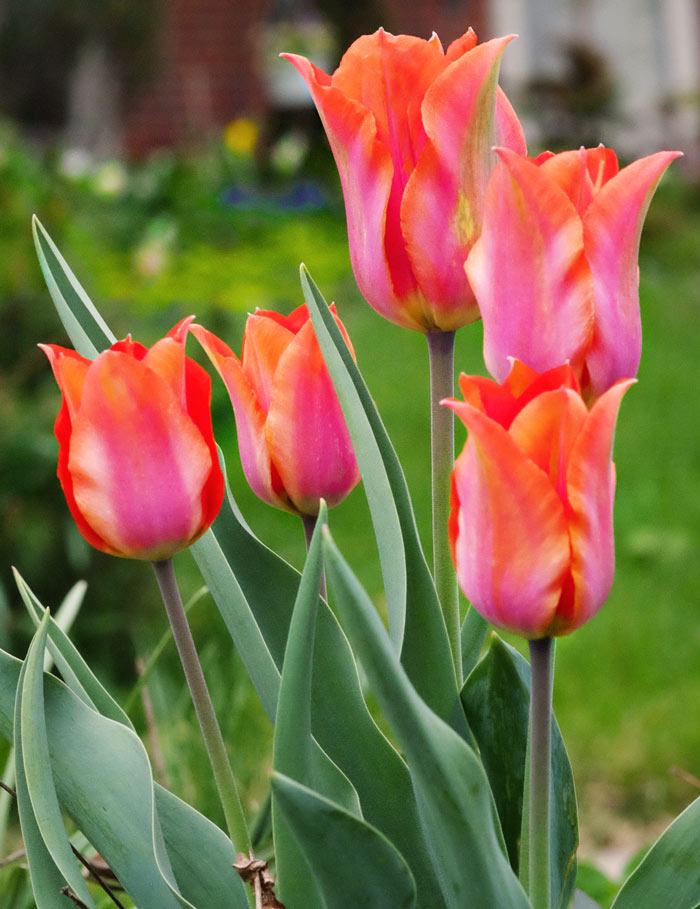 The tulips aren't here yet, but May is close now, just a wing and a prayer and a hop and a skip and a whiff and a shrug away.
The tulips aren't here yet, but May is close now, just a wing and a prayer and a hop and a skip and a whiff and a shrug away.
garden
Michigan
flowers
spring
tulips
May
May 2014
(Image credit: Little Fuji; h/t Edie Kieffer)
Apr 7, 2016
 Inside the screened porch in Columbia, Missouri, are tulips, safe from the deer. Outside in the yard is a homemade wood-fired bread oven.
Inside the screened porch in Columbia, Missouri, are tulips, safe from the deer. Outside in the yard is a homemade wood-fired bread oven.
garden
flowers
springtime
porch
Columbia
Missouri
oven
(Image credit: Mary Jo Neitz)
Apr 25, 2016

In the mid-nineteenth century, the area around the northern Japanese city of Towada was designated as imperial ranchland, devoted to raising horses for the samurai cavalry.
The most famous of these horses was probably First Frost, which Emperor Hirohito rode for propaganda purposes during World War II. The U.S. Navy claimed to confiscate First Frost but actually left it with Hirorhito's personal property. Admiral "Bull" Halsey had promised to ride Hirorhito's horse when the Americans arrived in Tokyo, so another all-white horse was substituted for a ceremonial ride through town, for propaganda purposes.
Towada recalls its heritage with bronze horses spilling out onto a main street designated officially as Government Administration Road, nicknamed Horse Road. There are also 151 cherry trees along the road.
Japan
flowers
sculpture
spring
horses
bronze
springtime
Towada
cherry blossoms
Mar 22, 2017
 This showed up the other day on the wall next to a parking lot in our (Seattle) neighborhood.
This showed up the other day on the wall next to a parking lot in our (Seattle) neighborhood.
streetscape
flowers
spring
Seattle
graffiti
wall
Maple Leaf
(Image credit: the phone)
Apr 14, 2017
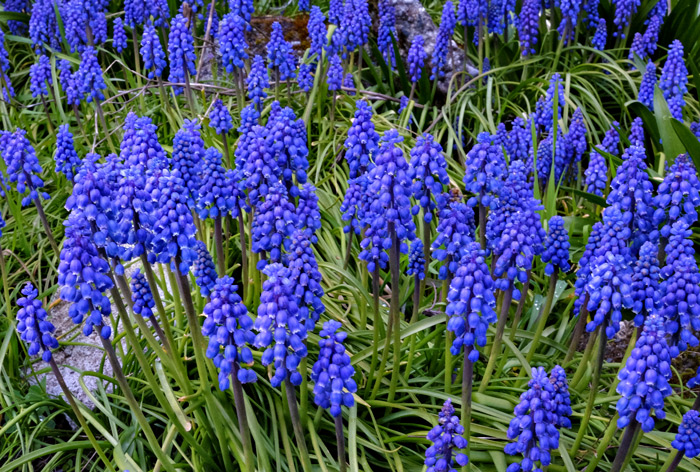 Here in the Puget Sound Lowlands, it's hyacinth season down the alley.
Here in the Puget Sound Lowlands, it's hyacinth season down the alley.
flowers
spring
78th Street
grape hyacinths
(Image credit: Fuji T)
Mar 22, 2018
 The Cornish daffodil fields produce 90 percent of England's commercial daffodil crop. In my neck of the woods, almost 5,000 miles from Cornwall, daffodils are blooming noncommercially even as we speak.
The Cornish daffodil fields produce 90 percent of England's commercial daffodil crop. In my neck of the woods, almost 5,000 miles from Cornwall, daffodils are blooming noncommercially even as we speak.
Perhaps in your neighborhood they're already fading, or maybe the new tips of their leaves are still hidden in the snow–no matter; spring is trundling on in these days, and if it's early spring, There Will Be Daffodils.
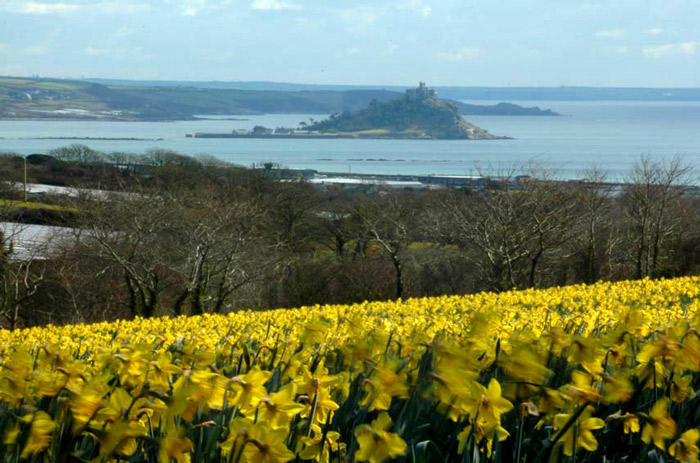

landscape
flowers
England
spring
coast
daffodils
castle
fields
farmland
hills
Cornwall
(Image credits: top, Image1.me; middle, cornwalls.co.uk; bottom, Jim Peters)






 This time of year, in this part of the world, the greening up is happening fast, and the procession of blooms is even faster.
This time of year, in this part of the world, the greening up is happening fast, and the procession of blooms is even faster.


































 The Cornish daffodil fields produce 90 percent of England's commercial daffodil crop. In my neck of the woods, almost 5,000 miles from Cornwall, daffodils are blooming noncommercially even as we speak.
The Cornish daffodil fields produce 90 percent of England's commercial daffodil crop. In my neck of the woods, almost 5,000 miles from Cornwall, daffodils are blooming noncommercially even as we speak.
